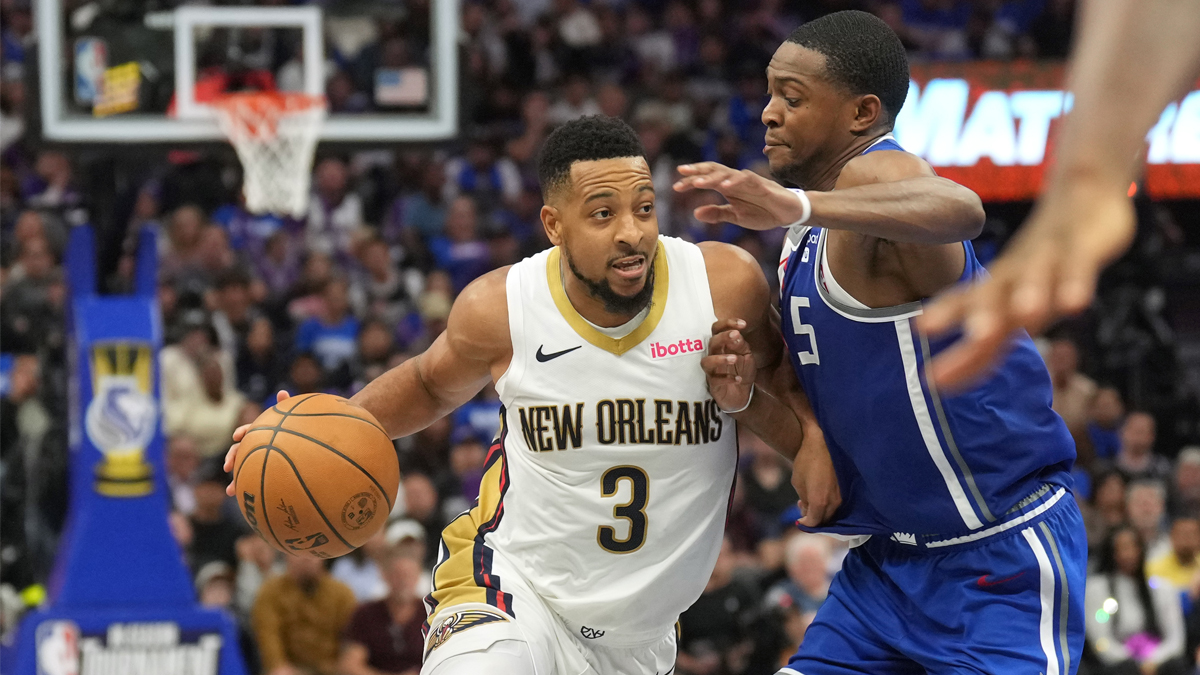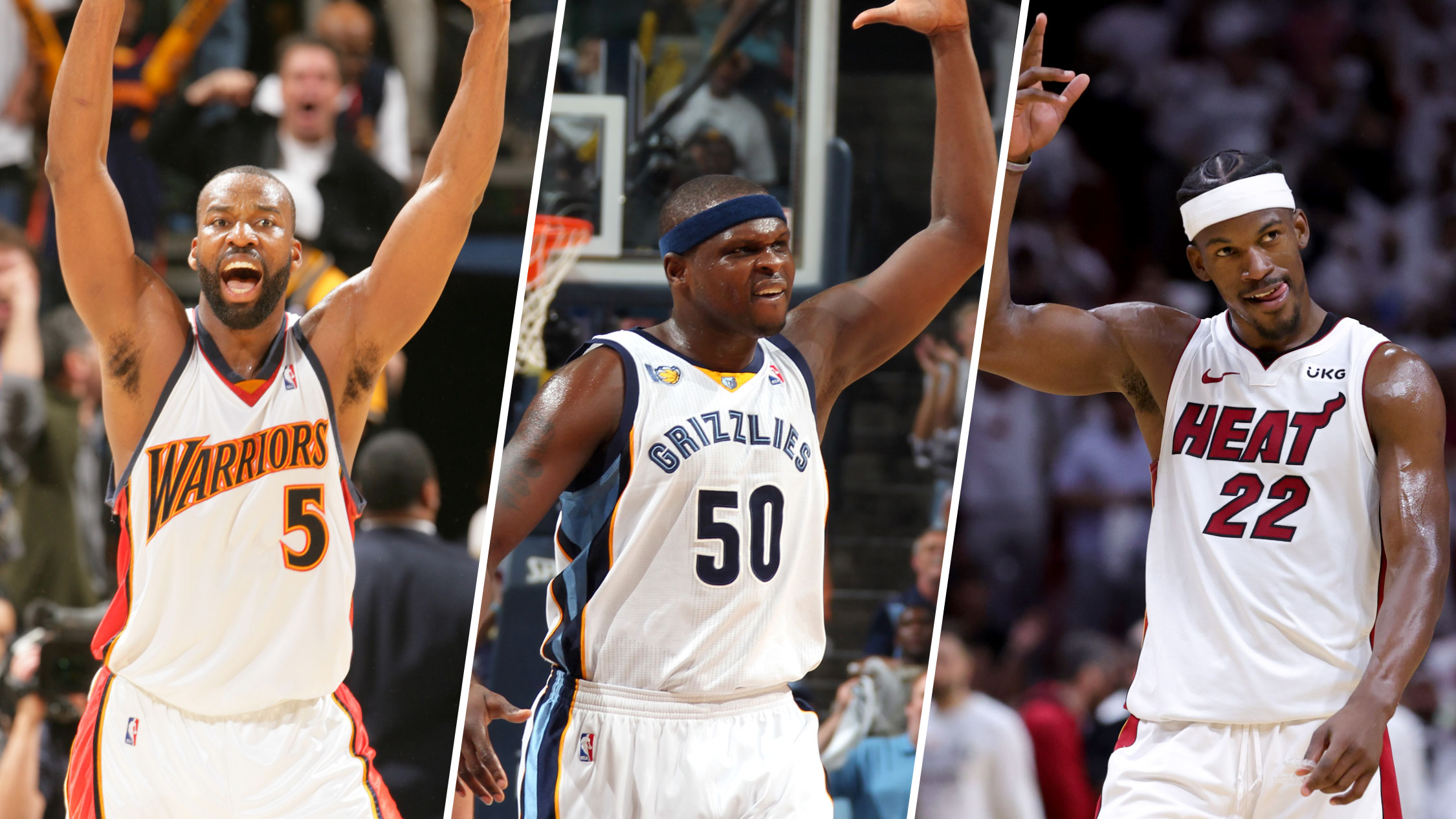The Bulls’ 2019-20 season is officially over after 65 games.
And what a season it was.
Yes, a .338 winning percentage left them well short of preseason playoff expectations, even with the league’s novel 22-team resumption format allowing for teams within six games of the eighth seed into play-in contention (the Bulls finished eight back of the Orlando Magic).
But widespread front office overhaul — punctuated by the hires of Arturas Karnisovas as executive vice president of basketball operations and Marc Eversley as general manager — somewhat salvaged a lost season. The two now face the rigors of an unprecedented, potentially nine-month offseason that will involve draft prep, continued roster and front office evaluation, and possibly a coaching search — all while continuing to grapple with the reality of the COVID-19 pandemic, which has pushed much of the team out-of-market, limited training capabilities and could act as a buzzsaw to the CBA as we know it.
That’s a lot to digest. And we’ll get to it all. But first, let’s tie a bow on the on-court good, bad, ugly and otherwise the Bulls endured this season, in report card form. We’ve hit the guards and wings. Last but not least: the big guys.
Lauri Markkanen
50 G, 29.8 MPG | 14.7 PPG, 6.3 RPG, 1.5 APG | 42.5% FG, 34.4% 3P, 82.4% FT | 2020-21 contract: $6,731,508
NBA
If it seemed like Lauri Markkanen was less involved in the Bulls’ offense this year than in his prior two, your eyes weren’t deceiving you. The numbers bear it out: In 2019-20, Markkanen’s usage dipped from 24.5% to 20.9%, his touches per game to from 66.2 to 45.3. He averaged 0.9 less shots than his rookie year, and played just 0.1 more minutes per game. While his catch-and-shoot and 3-point attempts ballooned in proportion to the rest of his looks, his efficiency faltered across the board. Other assertive statistics, such as his 41st-percentile defensive rebounding rate of 16.8%, slipped, as well. The bright spot was a 14-game stretch in December where he averaged 17.6 points on 50.8/41.6/83.3 shooting splits against the softest stretch of the Bulls’ schedule.
I don’t want to be too hard on Markkanen. But it was an ill-timed regression for multiple reasons. For the Bulls, seeing their second cornerstone falter in such a glaring manner in a season that began with playoff promises had to have been a wake-up call. For Markkanen, himself, a down Year 3 precluding rookie extension negotiations is far from ideal.
The question of how it should impact our expectations for Markkanen moving forward is even more complex. The first step there is to assign responsibility for his struggles, but that’s far from a clean calculation. Sure, Markkanen could have done more to actively inject himself into the Bulls’ offense. All those missed shots left his fingertips. But Jim Boylen and the rest of the coaching staff could have taken more intention in getting Markkanen involved, too; Markkanen’s minutes and the manner in which they were allocated fluctuated game-to-game. And then there were injuries — a nagging oblique to start the year that surely impaired him shooting the ball, then a twisted ankle he played through in January, then a pelvis strain that sidelined him 15 games. Markkanen had returned for four games on a minutes restriction when the season paused, to little meaningful result.
The new management regime has vowed to get to the bottom of the above set of considerations. The tools — his shooting range and agility are so rare for a 7-footer — are still there, and he just turned 23. Whether it be a new coach, training regimen, playstyle or otherwise, something must change for Markkanen if the Bulls’ rebuild is to get back on track. For the time being, his underwhelming campaign (regretfully) receives the lowest grade of the core, in part due to the expectations it began with.
Grade: D+
Wendell Carter Jr.
43 G, 29.2 MPG | 11.3 PPG, 9.4 RPG, 1.2 APG | 53.4% FG, 20.7% 3P, 73.7% FT | 2020-21 contract: $5,448,840
Carter’s raw numbers are never going to jump off the page, but his value to the Bulls is immense. Along with Kris Dunn, he was the connective tissue that held an over-performing defense together this season; his mobility and smarts were especially valuable at the center position, the final and most overtaxed line of defense in the team’s blitzing schemes. His block rate declined sharply in part due to those schemes drawing him up and away from the basket in pick-and-roll coverage, but even undersized, he remains a force on the offensive and defensive glass — the best on the team by a country mile and in the upper quadrant of the NBA, statistically. His impact shows up on film, in the advanced numbers and, often, in conversation. When he went down with a severely sprained ankle in early January, the defense cratered, and the rest of the team with it. The only glaring defensive deficiency to tidy up moving forward is his fouls; Carter committed 3.9 per game in 2019-20 — fourth in the league among qualified players — and fouled out of five contests.
Most of his improvements will need to come on the offensive end, where he was often relegated to quick pass-outs on DHOs or hunting second-chance baskets. Sprinkling in an open midrange jumper or two (which have clearly been coached out of him) couldn’t hurt, from a spacing perspective. Percentages aside, his willingness to extend his range beyond the 3-point arc is encouraging — and did you know he shot 40% at Duke? — but his ankle injury cut that experiment short for this season. It must be mentioned that he’s appeared in just 87 of a possible 137 games in his first two seasons.
The sky's the limit for Carter, especially on the defensive end. He showed that in spurts this year. He must be empowered to shoot for it.
Grade: B
Thad Young
64 G, 24.9 MPG | 10.3 PPG, 4.9 RPG, 1.8 APG | 44.8% FG, 35.6% 3P, 58.3% FT | 2020-21 contract: $13,545,000
As I wrote a couple months back, this season was a tale of three segments for Young. They break down as follows:
-
First 24 games: 21.2 minutes, 8.8 points, 4.2 rebounds, 0.9 steals; 40.9/34.2/56.7 shooting splits (8.5 attempts)
-
Next 21 games: 23.7 minutes, 9.3 points, 5.0 rebounds, 1.4 steals; 43.3/34.8/64.7 shooting splits (8.9 attempts)
-
Next 19 games: 30.8 minutes (15 starts), 13.3 points, 5.8 rebounds, 2.2 steals; 49.8/37.7/56 (11.1 attempts); 17 double-digit scoring performances
After the first 24 games, averaging the second-lowest minutes total of his career to only his rookie campaign, the Chicago Sun-Times first reported that Young was displeased with his role. A modest uptick in minutes ensued, as did his production and, seemingly, comfortability in the Bulls’ freshly-minted offensive and defensive systems.
Then, when Markkanen went down with his aforementioned pelvis injury, Young slid into a starters role, bumped his minutes average to over 30 per game and fully blossomed as a shooter and team defender at the power forward spot, even as the season imploded. That his best stretch of play coincided with Markkanen being sidelined is not encouraging for the long-term fit of the pairing. Nor is the fact that the two only shared the floor for 279 minutes this season, and the team sported a -3.9 net rating (with a putrid 99.1 offensive rating) in those minutes. There’s a serious question as to whether — from a basketball perspective — the two can co-exist without biting into each other’s opportunity.
The sum of it all is a down statistical season for Young; he hadn’t averaged under 30 minutes per game since 2011-12, much less 25, and though he steadied his long-range shooting on decent volume, his percentage from the field was the lowest of his career. But marked improvements when given opportunity show he’s not necessarily on the downswing of his career. He’s still 31, played in all but one game this season and is a locker room sage. A winning basketball player on a losing team. The offensive on/off splits are ugly (though noisy), but perhaps it may have all looked different if other areas had panned out. Young was inked as a supplementary player, after all.
Grade: B-
Daniel Gafford
43 G, 14.2 MPG | 5.1 PPG, 2.5 RPG, 0.5 APG | 70.1% FG, N/A 3P, 53.3% FT | 2020-21 contract: $1,517,981
Gafford has the chance to be a true steal from where the Bulls selected him — No. 38 overall — in the 2019 draft. His pseudo NBA debut on Nov. 18 featured 21 points, five rebounds, 10-for-12 shooting and two blocks against the NBA-best Milwaukee Bucks. Many of those themes permeated his rookie year.
Gafford ends 2019-20 the rookie leader in total blocks (56) and blocks per game (1.3), and fourth in the NBA in blocks per 36 minutes among those who played in 20 or more games. His high-flying ways stole hearts and his impossible combination of reach, bounce and force rattled rims. If he makes steady progress as a shot-blocker and rim-runner, he’s a productive NBA player and maybe the ideal backup center of the future to complement Carter. If the latter extends his range and repertoire as a facilitator (big-to-big lobs anyone?), they could even make a fun frontcourt pairing in spurts.
His tendency to overreach (he averaged 2.3 fouls per game in only 14.3 minutes per game) needs shoring up, but he was a rookie big playing in a strenuous defensive system. No reason for anything but optimism here.
Grade: B
Luke Kornet
36 G, 15.5 MPG | 6.0 PPG, 2.3 RPG, 0.9 APG | 43.9% FG, 28.7% 3P, 71.4% FT | 2020-21 contract: $2,250,000
Kornet came to Chicago a low-risk, potentially high-reward flyer. But his first season as a Bull was fraught from the beginning. Sinus obstruction surgery in November cost him eight games, and the issues that precluded it undoubtedly impaired him before the operation itself — through 10 October/November contests, Kornet was averaging four points, 1.9 rebounds and shooting 34.9% from the field (5-for-23 from deep).
By the time he got back up to speed, Gafford had emerged, and playing time came sporadically. While one of the selling points on Kornet was his obscene block rate with the Knicks in 2018-19, he struggled under the demands of persistently blitzing pick-and-rolls and the extra rotations that style elicits. His skills are probably more suited to drop coverage, where he could man the middle and use his obstructionary 7-foot-2 frame at more of a standstill. The jump shot came and went, but by the end of his season (which came in February after a severe ankle sprain sustained in practice) his 28.7% clip from deep (three attempts per) registered below expectation given his reputation as a floor-stretcher. The brightest stretch was a 14-game spell he started from mid-January through mid-February in which he averaged 10.1 points on 49.1% shooting. The Bulls went 4-10.
Kornet doesn’t make the top 100 of the Bulls’ biggest problems, but the flyer hasn’t panned out. He’s back next season in the last of a two-year deal, probably as the third center.
Grade: C-
Cristiano Felicio
22 G, 17.5 MPG | 3.9 PPG, 4.6 RPG, 0.7 APG | 63% FG, N/A 3P, 78.3% FT | 2020-21 contract: $7,529,020
Let’s not spend too much time here. Felicio popped into the rotation towards the end of the season mostly on account of injuries, and just about met current expectations. A 12-point, nine-rebound (seven offensive) performance in a win over the Timberwolves on Jan. 22 was the high water-mark.
The contract is an albatross. It expires after next season, but could hypothetically be used as a trade-filler in the meantime.
Grade: D
Subscribe: Apple Podcasts | Spotify | Google Podcasts | Stitcher | Art19


